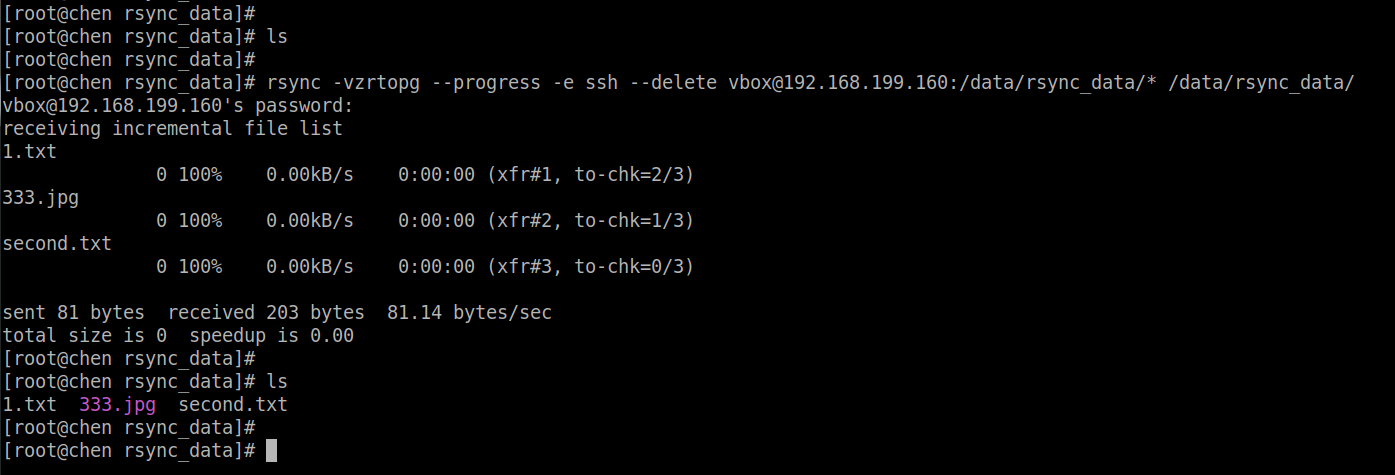系统版本:CentOS Linux release 7.4.1708 (Core)
rsync版本:3.1.3
一:在服务器端设置
1、下载rsync,解压并编译
# mkdir /data/server/rsync # cd /usr/local/src # wget https://download.samba.org/pub/rsync/src/rsync-3.1.3.tar.gz # tar -zxvf rsync-3.1.3.tar.gz # cd rsync-3.1.3 # ./configure --prefix=/data/server/rsync # make && make install
2、设置软连接
# ln -s /data/server/rsync/bin/rsync /usr/local/bin/rsync
3、配置/etc/rsyncd.conf ( 创建配置文件,默认安装好rsync程序后,并不会自动创建rsync的主配置文件,需要手工来创建,其主配置文件为“/etc/rsyncd.conf”,创建该文件并插入如下内容: )
# vim /etc/rsyncd.conf uid = root gid = root use chroot = no max connections = 4 exclude = lost+found/ transfer logging = yes timeout = 900 ignore nonreadable = yes dont compress = .gz .tgz .zip .z .Z .rpm .deb .bz2 [test] path=/data/rsync_data/ # 设置同步的目录 comment=test ignore errors read only=yes write only=no list=no auth user=root secrets file=/etc/rsyncd.passwd hosts allow=
4、启动rsync
# systemctl start rsyncd
二:在客户端设置rsync
1、编译安装和服务器端安装方式一样,记得设置软连接
2、在客户端同步服务器端的数据( 使用服务器端的用户vbox来进行同步 )
# rsync -vzrtopg --progress -e ssh --delete vbox@192.168.199.160:/data/rsync_data/* /data/rsync_data/
